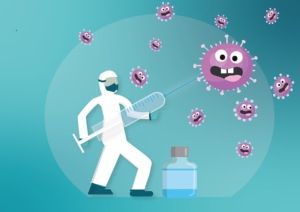News
Will the end of corona passes lead to less reliable infection numbers?
This article is more than 3 years old.
For months Denmark has had a decent handle on how many people have COVID-19, but that could end with the lifting of restrictions, warns an expert

We appear to be fighting it off (photo: Pixabay)
Let’s face it: the corona infection numbers coming out of most countries are a joke.
Testing is free in Denmark, and this has swayed a great many more people to go to a centre than in other countries where tests typically cost between 200 and 500 kroner.
Accordingly Denmark has been pretty much leading the way for infection numbers this past month. There have been days when nearly 1 percent of the population have tested positive.
Less accurate picture
However, following the withdrawal of the corona pass regulations, Troels Petersen from the Niels Bohr Institute does not expect future infection rate numbers to paint an accurate picture – for two reasons, according to DR.
Firstly, fewer people will be seeking 72 and 48-hour corona passes in light of the restrictions ending.
Secondly, behaviour will change due to the restrictions ending, and there is no accounting for how this will affect people’s attitude to getting tested.
Passes still required by some workplaces
Nevertheless, some workplaces will continue to demand corona passes, and they have the backing of Dansk Industri to continue with the measures.
The FH trade union body would like to see the requirement shelved, though.
FH chair Lizette Risgaard is surprised employers were so vocal about ending the restrictions if they were going to oppose such measures in their own backyard.
Healthy fall in R rate
Yesterday, therefore, might be the last time Denmark gets a fairly accurate picture of its corona situation, and it is good news, as the Reproduction Rate has fallen from 1.2 to 1.0 over the past seven days.
This is in line with Statens Serum Institut’s observation that the infection rate is falling in urban areas – particularly at schools.
In total, 45,366 fresh cases were confirmed yesterday and 15 more deaths. Some 28.52 percent of all PCR tests were positive and the number in hospital stands at 1,070, although at least 40 percent were admitted for other reasons.










































